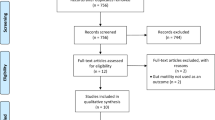Abstract
Objective: To develop a practical, valid and reliable chart to assist in the accurate visual characterization of fecal output in patients receiving enteral tube feeding (ETF).
Design: A chart incorporating verbal and pictorial descriptors of fecal output was developed. Validity and reliability were assessed by a questionnaire survey of health professionals and a clinical study of patients commencing ETF. Content validity was assessed from the results of the questionnaire, construct validity by contrasting groups analysis, concurrent validity by comparison of the chart with actual fecal weight and inter-rater reliability by independent characterization of the same fecal sample by two nurses.
Setting: St George's Hospital, London, UK.
Subjects: In all, 35 health professionals completed a questionnaire with respect to the chart. The chart was then used to monitor fecal output in 36 patients commencing ETF for a total of 171 patient-days, during which time nurses used the chart to characterize 269 fecal samples, of which 59 were subsequently weighed.
Results: The results of the questionnaire suggested good content validity. The chart demonstrated statistically significant differences in fecal frequency, fecal consistency, fecal score and incidence of diarrhea for contrasting patient groups expected to have different fecal output (P<0.05). The inter-rater reliability was almost perfect for fecal consistency (95% agreement, κ=0.91) and substantial for fecal weight (83%, κ=0.75). In all, 83% of fecal samples were assigned to the correct weight category (κ=0.75).
Conclusion: The chart has good content, construct and concurrent validity and inter-rater reliability, and is suitable for both research and clinical use.
Sponsorship: This research was jointly supported by King's College London and Nestlé, UK.
This is a preview of subscription content, access via your institution
Access options
Subscribe to this journal
Receive 12 print issues and online access
$259.00 per year
only $21.58 per issue
Buy this article
- Purchase on Springer Link
- Instant access to full article PDF
Prices may be subject to local taxes which are calculated during checkout



Similar content being viewed by others
References
Allen UD, Deadman L & Wang EEL (1994): Standardising the assessment of diarrhoea in clinical trials: results of an interobserver agreement study. Acta Paediatr. 83, 179–182.
Bland JM & Altman DG (2002): Validating scales and indexes. BMJ 324, 606–607.
Bleichner G, Blehaut H, Mentec H & Moyse D (1997): Sacchromyces boulardii prevents diarrhoea in critically ill tube fed patients. Int.Care Med. 23, 517–523.
Bliss DZ, Guenter PA & Settle RG (1992): Defining and reporting diarrhoea in tube-fed patients —what a mess! Am. J. Clin. Nutr. 55, 753–759.
Bliss DZ, Johnson S, Savik K, Clabots CR, Willard K & Gerding DN (1998): Acquisition of Clostridium difficile and Clostridium difficile-associated diarrhoea in hospitalised patients receiving tube feeding. Ann. Intern. Med. 129, 1012–1019.
Bliss DZ, Larson SJ, Burr JK & Savik K (2001): Reliability of a stool consistency classification system. J. Wound Ostomy Cont. Nurs. 28, 305–313.
Bliss DZ, Savik K, Jung H, Jensen L, LeMoine M & Lowry A (1999): Comparison of subjective classification of stool consistency and stool water content. J. Wound Ostomy Cont. Nurs. 26, 137–141.
Cataldi-Betcher EL, Seltzer MH, Slocum BA & Jones KW (1983): Complications occurring during enteral nutrition support: a prospective study. J. Parenteral Enteral. Nutr. 7, 546–552.
Daffurn K, Hillman KM, Bauman A, Lum M, Crispin C & Ince L (1994): Fluid balance charts: do they measure up? Br. J. Nurs. 3, 816–820.
DeMeo M, Kolli S, Keshavarzian A, Borton M, Al-Hosni M, Dyavanapalli M, Shiau A, Tu N, Frommel T, Zarling E, Goris G, Shawaryn G & Mobarhan S (1998): Beneficial effect of a bile acid resin binder on enteral feeding induced diarrhea. Am. J. Gastroenterol. 93, 967–971.
Frankenfield DC & Beyer PL (1989): Soy-polysaccharide fiber: effect on diarrhoea in tube-fed, head injured patients. Am. J. Clin. Nutr. 50, 533–538.
Grant JS & Davis LL (1997): Selection and use of content experts for instrument development. Res. Nurs. Health 20, 269–274.
Guenter PA & Sweed MR (1998): A valid and reliable tool to quantify stool output in tube-fed patients. J. Parenteral Enteral. Nutr. 22, 147–151.
Hart GK & Dobb GJ (1988): Effect of a fecal bulking agent on diarrhoea during enteral feeding in the critically ill. J. Parenteral Enteral Nutr. 12, 465–468.
Hwang TS, Lue MC, Nee YJ, Jan YY & Chen MF (1994): The incidence of diarrhoea in patients with hypoalbuminaemia due to acute or chronic malnutrition during enteral feeding. Am. J. Gastroenterol. 89, 376–378.
Kelly TWJ, Patrick MR & Hillman KM (1983): Study of diarrhea in critically ill patients. Crit. Care Med. 11, 7–9.
Landis JR & Koch GG (1977): The measurement of observer agreement for categorical data. Biometrics 33, 159–174.
Lebak KJ, Bliss DZ, Savik K & Patten-Marsh KM (2003): What's new on defining diarrhea in tube-feeding studies? Clin. Nurs. Res. 12, 174–204.
Mertz HR, Beck K, Dixon W, Esquivel A, Hays RD & Shapiro MF (1995): Validation of a new measure of diarrhea. Dig. Dis. Sci. 40, 1873–1882.
Nelson M, Atkinson M & Darbyshire S (1996): Food photography II: use of food photographs for estimating portion size and the nutrient content of meals. Br. J. Nutr. 76, 31–49.
Spapen H, Diltoer M, Van Malderen C, Opdenacker G, Suys E & Huyghens L (2001): Soluble fiber reduces the incidence of diarrhea in septic patients receiving total enteral nutrition: a prospective, double-blind, randomized and controlled trial. Clin. Nutr. 20, 301–305.
Walter SD, Eliasziw M & Donner A (1998): Sample size and optimal designs for reliability studies. Stat. Med. 17, 101–110.
Wenzl HH, Fine KD, Schiller LR & Fordtran JS (1995): Determinants of decreased fecal consistency in patients with diarrhoea. Gastroenterology 108, 1729–1738.
Whelan K, Judd PA & Taylor MA (2003): Defining and reporting diarrhoea during enteral tube feeding: do health professionals agree? J. Hum. Nutr. Diet 16, 21–26.
Acknowledgements
We thank the Department of Nutrition and Dietetics and the Nursing staff of St George's Hospital London, and the questionnaire respondents for their assistance in this study. This research was jointly supported by King's College London and Nestlé, UK.
Author information
Authors and Affiliations
Contributions
Guarantor: K Whelan.
Contributors: KW, PAJ and MAT developed the chart, designed the questionnaire survey, designed the clinical study and wrote the manuscript. KW conducted the questionnaire survey and the clinical study and analysed the data. The full chart can be downloaded at http://www.kcl.ac.uk/stoolchart
Corresponding author
Rights and permissions
About this article
Cite this article
Whelan, K., Judd, P. & Taylor, M. Assessment of fecal output in patients receiving enteral tube feeding: validation of a novel chart. Eur J Clin Nutr 58, 1030–1037 (2004). https://doi.org/10.1038/sj.ejcn.1601927
Received:
Revised:
Accepted:
Published:
Issue Date:
DOI: https://doi.org/10.1038/sj.ejcn.1601927
Keywords
This article is cited by
-
Clinical impact of diarrhea during enteral feeding after esophagectomy
International Journal of Clinical Oncology (2024)
-
Diarrhea during critical illness: a multicenter cohort study
Intensive Care Medicine (2022)
-
Enteral tolerance in critically ill patients
Journal of Intensive Care (2019)
-
A randomized controlled pilot study to evaluate the effect of an enteral formulation designed to improve gastrointestinal tolerance in the critically ill patient—the SPIRIT trial
Critical Care (2017)
-
Low-FODMAP formula improves diarrhea and nutritional status in hospitalized patients receiving enteral nutrition: a randomized, multicenter, double-blind clinical trial
Nutrition Journal (2015)



